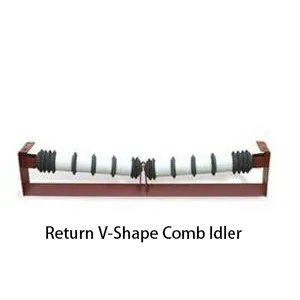 Afrikaans
Afrikaans  Albanian
Albanian  Amharic
Amharic  Arabic
Arabic  Armenian
Armenian  Azerbaijani
Azerbaijani  Basque
Basque  Belarusian
Belarusian  Bengali
Bengali  Bosnian
Bosnian  Bulgarian
Bulgarian  Catalan
Catalan  Cebuano
Cebuano  Corsican
Corsican  Croatian
Croatian  Czech
Czech  Danish
Danish  Dutch
Dutch  English
English  Esperanto
Esperanto  Estonian
Estonian  Finnish
Finnish  French
French  Frisian
Frisian  Galician
Galician  Georgian
Georgian  German
German  Greek
Greek  Gujarati
Gujarati  Haitian Creole
Haitian Creole  hausa
hausa  hawaiian
hawaiian  Hebrew
Hebrew  Hindi
Hindi  Miao
Miao  Hungarian
Hungarian  Icelandic
Icelandic  igbo
igbo  Indonesian
Indonesian  irish
irish  Italian
Italian  Japanese
Japanese  Javanese
Javanese  Kannada
Kannada  kazakh
kazakh  Khmer
Khmer  Rwandese
Rwandese  Korean
Korean  Kurdish
Kurdish  Kyrgyz
Kyrgyz  Lao
Lao  Latin
Latin  Latvian
Latvian  Lithuanian
Lithuanian  Luxembourgish
Luxembourgish  Macedonian
Macedonian  Malgashi
Malgashi  Malay
Malay  Malayalam
Malayalam  Maltese
Maltese  Maori
Maori  Marathi
Marathi  Mongolian
Mongolian  Myanmar
Myanmar  Nepali
Nepali  Norwegian
Norwegian  Norwegian
Norwegian  Occitan
Occitan  Pashto
Pashto  Persian
Persian  Polish
Polish  Portuguese
Portuguese  Punjabi
Punjabi  Romanian
Romanian  Russian
Russian  Samoan
Samoan  Scottish Gaelic
Scottish Gaelic  Serbian
Serbian  Sesotho
Sesotho  Shona
Shona  Sindhi
Sindhi  Sinhala
Sinhala  Slovak
Slovak  Slovenian
Slovenian  Somali
Somali  Spanish
Spanish  Sundanese
Sundanese  Swahili
Swahili  Swedish
Swedish  Tagalog
Tagalog  Tajik
Tajik  Tamil
Tamil  Tatar
Tatar  Telugu
Telugu  Thai
Thai  Turkish
Turkish  Turkmen
Turkmen  Ukrainian
Ukrainian  Urdu
Urdu  Uighur
Uighur  Uzbek
Uzbek  Vietnamese
Vietnamese  Welsh
Welsh  Bantu
Bantu  Yiddish
Yiddish  Yoruba
Yoruba  Zulu
Zulu conveyor pulley components
Understanding Conveyor Pulley Components
Conveyor systems play a pivotal role in modern industries, facilitating the efficient movement of materials across various applications. One of the key components of these systems is the conveyor pulley. Understanding the different components of conveyor pulleys is essential for optimizing performance and ensuring longevity.
Understanding Conveyor Pulley Components
Shell The shell of the pulley is the cylindrical part that supports the conveyor belt and is crucial for the transfer of drive power. Typically made from steel, the shell is designed to withstand heavy loads and abrasive materials. Its surface is often coated or treated to reduce wear and increase resistance to corrosion. The diameter and width of the shell can vary based on the specific application and load requirements.
conveyor pulley components

End Discs The end discs, also known as end caps, are the circular plates fixed to either end of the shell. These discs provide structural integrity to the pulley, keeping the shell in place and ensuring that it maintains its shape under stress. The design of the end discs is critical, as they must align perfectly with the shell to prevent belt misalignment and ensure smooth operation. In some designs, end discs are welded on, while others may use bolts for easy replacement.
Bearings Bearings are vital for ensuring smooth rotation of the pulley. They reduce friction and enable the pulley to turn without excessive wear. There are various types of bearings used in conveyor pulleys, including roller bearings and sleeve bearings, each chosen based on the application’s requirements. Proper installation and regular maintenance of bearings are crucial, as they can significantly affect the lifespan of the pulley.
Types of Pulleys Conveyor pulleys come in various types, including drive pulleys, return pulleys, snub pulleys, and take-up pulleys, each serving a distinct purpose within the conveyor system. Drive pulleys are responsible for moving the belt, while return pulleys simply guide the belt back to the starting point without conveying load.
In summary, the components of conveyor pulleys—shell, end discs, and bearings—are integral to their operation. Understanding these elements helps in recognizing the importance of maintenance and proper selection based on specific industrial needs. By prioritizing the correct setup and upkeep of conveyor pulleys, industries can enhance productivity while minimizing downtime and repair costs. Investing in quality pulleys and understanding their components will ultimately lead to more efficient and reliable conveyor systems.
-
Revolutionizing Conveyor Reliability with Advanced Rubber Lagging PulleysNewsJul.22,2025
-
Powering Precision and Durability with Expert Manufacturers of Conveyor ComponentsNewsJul.22,2025
-
Optimizing Conveyor Systems with Advanced Conveyor AccessoriesNewsJul.22,2025
-
Maximize Conveyor Efficiency with Quality Conveyor Idler PulleysNewsJul.22,2025
-
Future-Proof Your Conveyor System with High-Performance Polyurethane RollerNewsJul.22,2025
-
Driving Efficiency Forward with Quality Idlers and RollersNewsJul.22,2025





























